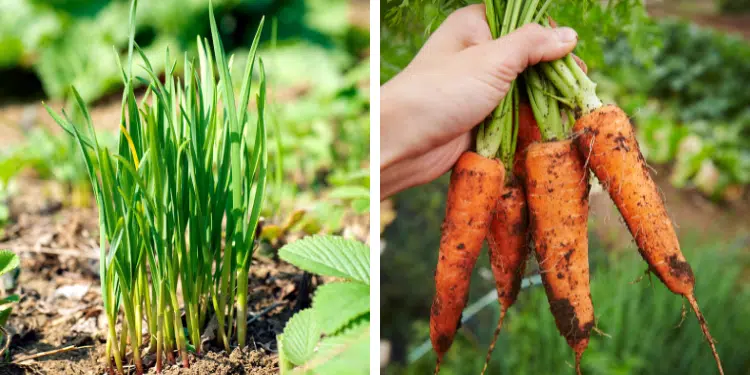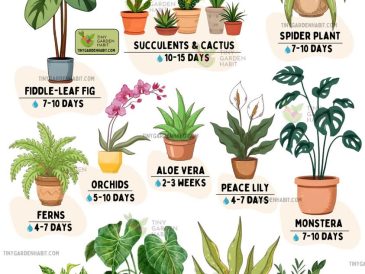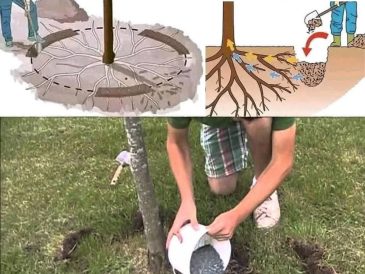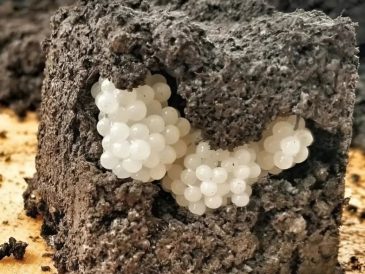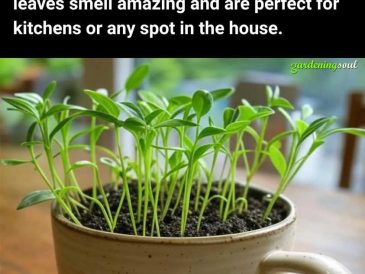When most people think of September, they imagine harvesting pumpkins, apples, and the last of the summer tomatoes.
But for experienced gardeners, September is also the beginning of another productive planting window.
The soil is still warm from summer, rainfall increases, and cooler nights encourage steady growth without the stress of scorching heat.
Planting in September allows you to stretch your gardening season, harvest fresh vegetables and greens in fall, and even prepare for spring.
With the right choices, you can be cutting lettuce in October, pulling up sweet carrots in November, or picking kale leaves well into winter.
Why Plant in September?
- Warm Soil, Cool Air: Seeds germinate faster in soil warmed by summer but grow steadily in the cool air of fall.
- Fewer Pests: Many common summer pests (aphids, flea beetles, caterpillars) decline in fall.
- Better Flavor: Crops like kale, carrots, and spinach turn sweeter when touched by frost.
- Efficient Use of Space: As summer crops fade, you can replant beds for a second harvest.
Month-by-Month Planting Breakdown
Early September (Weeks 1–2)
- Best for: fast-maturing greens (spinach, lettuce, arugula), radishes, turnips.
- Soil is still warm, making germination quick.
Mid-September (Weeks 2–3)
- Plant hardy root crops like carrots and beets.
- Transplant brassicas (broccoli, kale) for a fall head start.
Late September (Weeks 3–4)
- Perfect for garlic (next summer’s harvest).
- Last chance for radishes and leafy greens in cooler zones.
Regional Planting Notes (USDA Hardiness Zones)
- Zones 8–10 (South & West Coast): Longer fall growing season. You can plant most of these crops into late September and even October.
- Zones 6–7 (Midwest, Mid-Atlantic, Pacific Northwest): September planting is ideal—cover crops at first frost.
- Zones 3–5 (Northern regions, Northeast, Upper Midwest): Plant in early September for a fall harvest. Consider row covers or cold frames.
The 10 Best Crops to Plant in September
1. Spinach
- Soil Prep: Loamy, well-drained soil enriched with compost. Ideal pH 6.5–7.0.
- Planting: Direct sow ½ inch deep, 2–3 inches apart. Thin to 4–6 inches once seedlings appear.
- Watering: Keep soil consistently moist. Mulch lightly to retain cool soil temperatures.
- Fertilizer: Side-dress with compost or a nitrogen-rich organic fertilizer every 3 weeks.
- Pests/Diseases: Watch for leaf miners – remove affected leaves promptly.
- Harvesting: Cut outer leaves first, leaving center intact for continual growth.
2. Radishes
- Soil Prep: Light, sandy soil is best. Avoid high nitrogen – encourages leafy tops, not roots.
- Planting: Sow directly ½ inch deep, 1 inch apart. Thin to 2 inches apart.
- Watering: Keep evenly moist. Dry spells cause pithy roots.
- Fertilizer: Minimal feeding needed. Too much fertilizer = spongy radishes.
- Pests: Flea beetles may chew holes in leaves. Floating row covers help.
- Harvesting: Pull promptly at maturity (20–30 days) to avoid woodiness.
3. Lettuce
- Soil Prep: Loose, fertile soil enriched with organic matter. pH 6.0–6.8.
- Planting: Sow shallowly, just ¼ inch deep. Thin to 8 inches for loose leaf, 12 inches for romaine.
- Watering: Consistent, shallow watering. Drought makes leaves bitter.
- Fertilizer: A balanced organic fertilizer every 2–3 weeks.
- Pests: Slugs and snails – use copper tape or diatomaceous earth.
- Harvesting: Cut leaves as needed (cut-and-come-again) or harvest whole heads.
4. Kale
- Soil Prep: Well-drained, compost-rich soil. Prefers pH 6.0–7.5.
- Planting: Direct sow ½ inch deep, 12–18 inches apart.
- Watering: 1–1.5 inches per week. Mulch heavily for steady soil temps.
- Fertilizer: Nitrogen-rich compost tea boosts leafy growth.
- Pests: Cabbage worms are common – use row covers.
- Harvesting: Start picking outer leaves when 6–8 inches long. Frost sweetens flavor.
5. Carrots
- Soil Prep: Deep, loose, stone-free soil is essential. Add sand if heavy clay. pH 6.0–6.8.
- Planting: Sow ¼ inch deep, very thinly. Thin to 2 inches once seedlings are 2 inches tall.
- Watering: Water deeply once a week. Avoid uneven watering (causes cracking).
- Fertilizer: Use a low-nitrogen fertilizer (too much = forked carrots).
- Pests: Carrot flies – plant onions nearby as natural deterrent.
- Harvesting: Harvest when tops are ½–1 inch wide. Leave in ground under mulch for extended storage.
6. Garlic
- Soil Prep: Rich, well-drained soil with organic matter. Ideal pH 6.0–7.0.
- Planting: Break cloves and plant pointed side up, 2 inches deep, 6 inches apart.
- Watering: Keep soil moist until freeze. Stop watering 2–3 weeks before harvest.
- Fertilizer: Apply balanced fertilizer at planting, then nitrogen-rich boost in spring.
- Pests: Onion maggots and rot – rotate crops yearly.
- Harvesting: Harvest in July when tops yellow and fall. Cure bulbs in a dry, airy place.
7. Beets
- Soil Prep: Fertile, loose soil enriched with compost. pH 6.0–7.5.
- Planting: Sow ½ inch deep, 2 inches apart. Thin to 3–4 inches.
- Watering: 1 inch of water weekly. Consistent moisture prevents woody roots.
- Fertilizer: Phosphorus and potassium encourage root growth (avoid too much nitrogen).
- Pests: Leaf miners – pinch affected leaves.
- Harvesting: Pick greens in 30 days, roots at 2–3 inches diameter (60–70 days).
8. Broccoli
- Soil Prep: Heavy feeder – rich, well-drained soil with compost. pH 6.0–7.0.
- Planting: Transplant seedlings 18 inches apart.
- Watering: Keep soil evenly moist. Stress causes small heads.
- Fertilizer: Nitrogen boost every 2 weeks after transplanting.
- Pests: Cabbage worms, aphids. Neem oil or insect netting helps.
- Harvesting: Cut central head before flowers open. Side shoots follow.
9. Turnips
- Soil Prep: Light, well-drained soil. Avoid heavy clay. pH 6.0–6.8.
- Planting: Sow ½ inch deep, 2 inches apart. Thin to 4 inches.
- Watering: Steady moisture for tender roots.
- Fertilizer: Balanced fertilizer – too much nitrogen = leafy tops, small roots.
- Pests: Flea beetles and root maggots – rotate crops annually.
- Harvesting: Greens in 30 days, roots in 45–60. Best harvested small and tender.
10. Swiss Chard
- Soil Prep: Enriched with compost, well-drained. Prefers pH 6.0–7.5.
- Planting: Sow ½ inch deep, 6 inches apart. Thin to 12 inches.
- Watering: Regular watering, about 1 inch per week. Mulch to retain moisture.
- Fertilizer: Monthly feeding with compost tea or fish emulsion.
- Pests: Leaf miners – remove damaged leaves promptly.
- Harvesting: Cut outer leaves as needed, leaving inner stalks to keep producing.
Extra September Planting Ideas
In addition to the big 10, consider adding:
- Arugula: Peppery greens ready in 20 days.
- Mustard Greens: Spicy, frost-tolerant, and perfect for stir-fries.
- Cilantro: Grows best in cooler temps; perfect fall herb.
Extending Your Fall Harvest
1. Use Row Covers
Protects plants from frost and pests while maintaining warmth.
2. Cold Frames and Greenhouses
Even simple DIY cold frames can extend your harvest by months.
3. Mulching
Straw, shredded leaves, or wood chips help regulate soil temperature and moisture.
4. Succession Planting
Sow radishes, spinach, and lettuce every 1–2 weeks for continuous harvests.
September is not the end of the gardening season – it’s a second beginning. By planting crops like spinach, kale, lettuce, and carrots, you can enjoy harvests that last into November and even December.
Garlic planted now ensures next year’s bounty.

